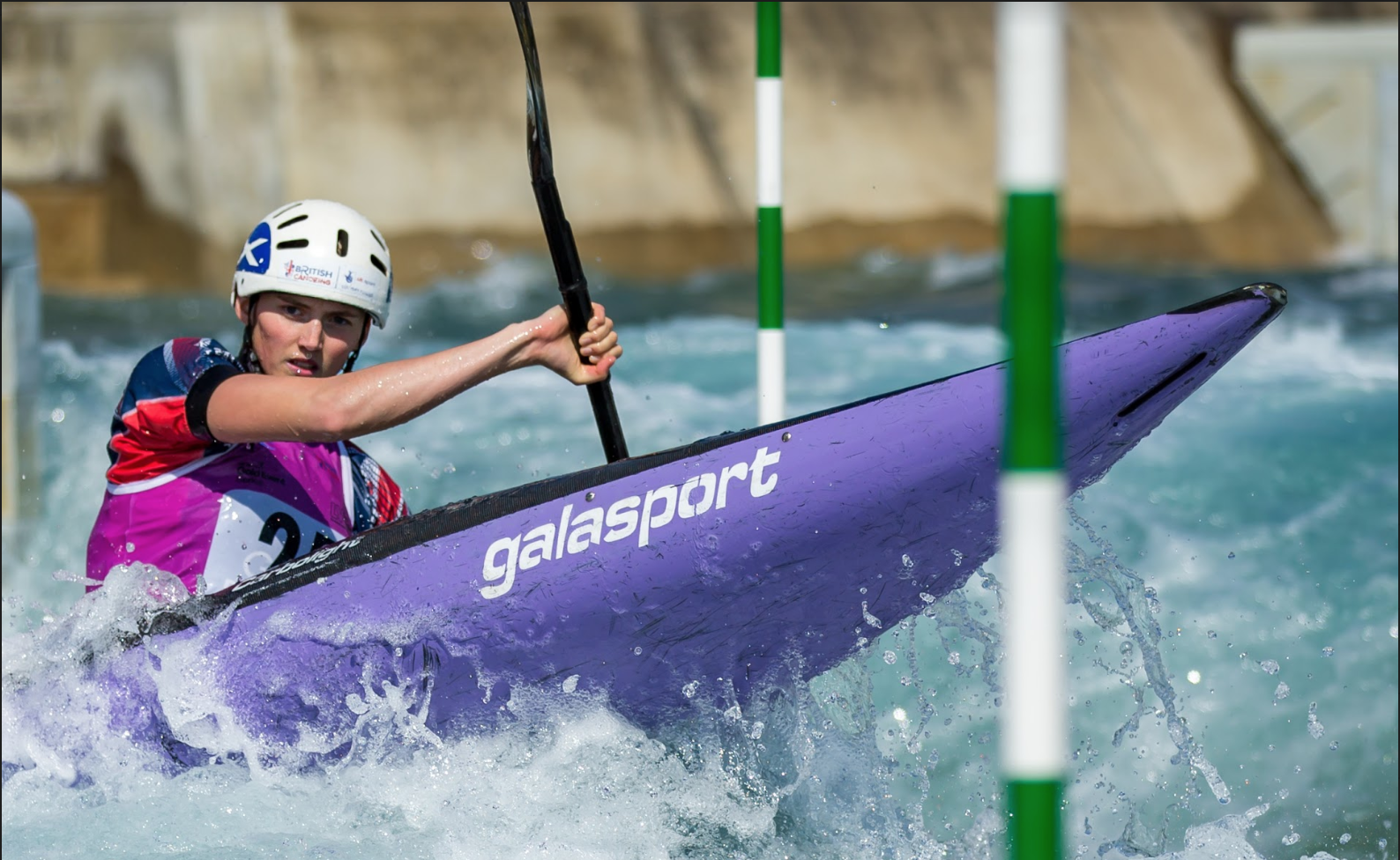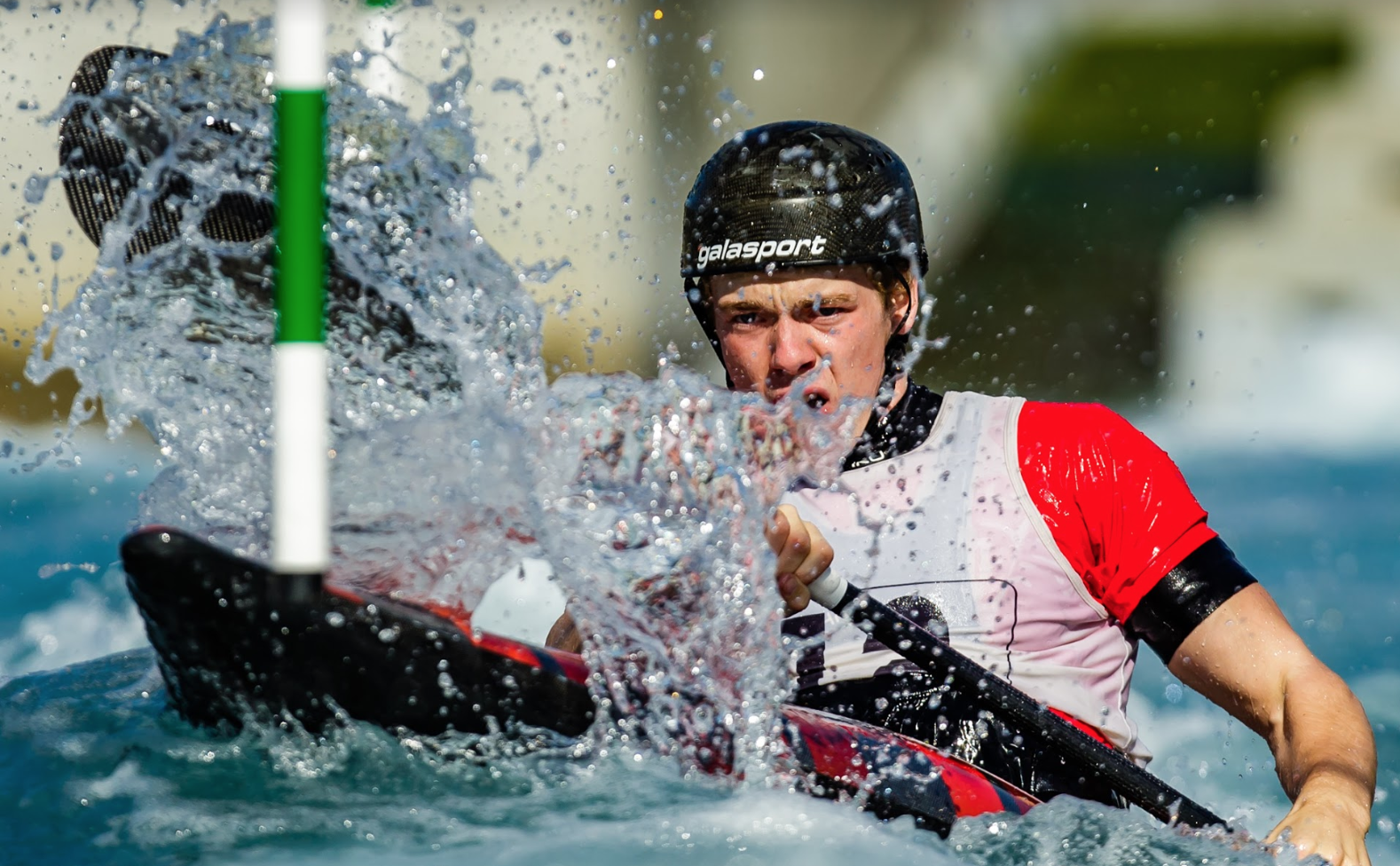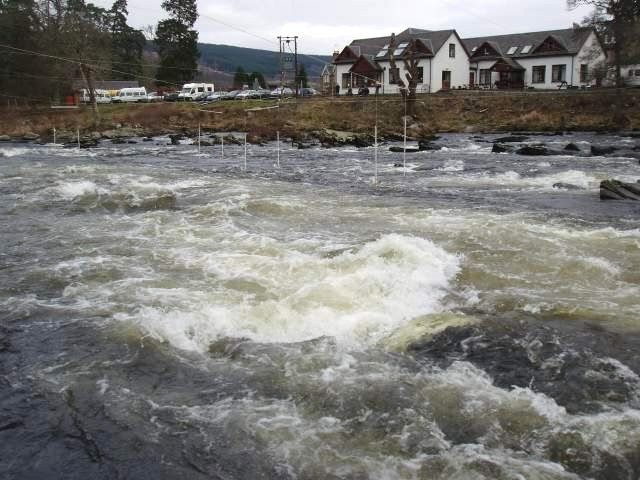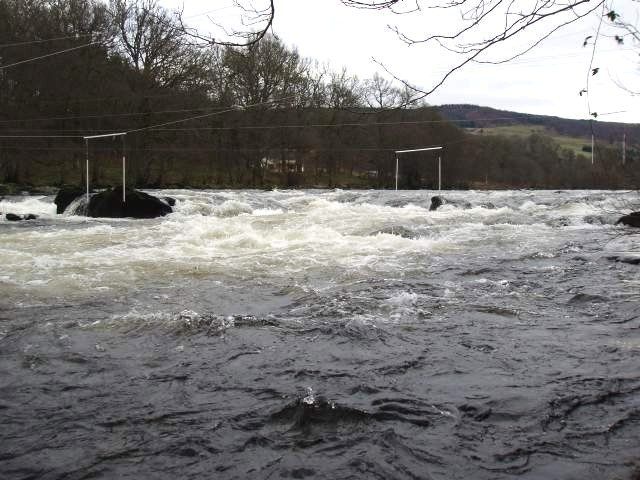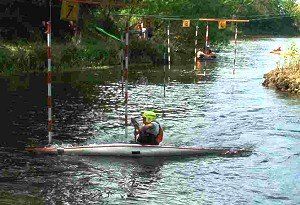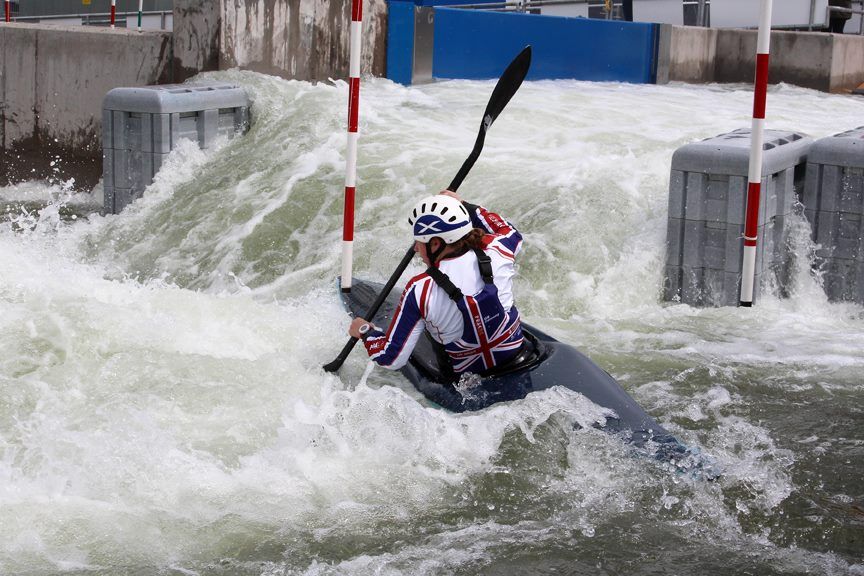Slalom
About Slalom
Slalom is one of the most exciting branches of canoeing where the paddler has to steer the boat down a set course as quickly as possible, passing through a numbered series of downstream and upstream gates in the process. Each gate comprises two hanging poles at a set distance apart.
Time penalties are incurred by hitting the poles (2's) or by missing the gate (50's). The competitor must get enough of the boat and body across the gate-line between the poles to satisfy the judges. The run score is worked out by adding the run-time and the penalty seconds from the run. At the Olympics and other major International events there are three rounds, qualification-semifinal-final, that athletes must progress through. Only the top 10 semifinalists get into the final.
The objective of every competitor is to be 'fast & clean'.
Organisation
Slalom is organised on a divisional basis such that paddlers compete against others of similar ability with events being held between March and October. Official entry cards can be obtained from the Slalom Committee Secretary or SCA Office on receipt of a Stamped Addressed Envelope, and should be sent to the event organiser (refer events calendar) at least two weeks before the event.
Division 4 entries are often taken on the day and prizes awarded for all classes of boats including "plastic" ones. All cheques/postal orders should be made payable to the organising club, not to the person organising the event. In addition to the full slaloms, short ranking slaloms for newcomers to the sport are organised throughout the season.
SCA Performance, through investment from sportscotland, operates a Performance Squad to support athletes with the potential and commitment to achieve Olympic medals.
Slalom Development Group
The Slalom Development Group consists of:
Owen Inglis Humphrey
Peter Curry
Tony Leaver
Mike Chandler
To contact the group please email hello@paddlescotland.org.uk.
Scottish Rankings
Slalom Site Risk Assessments
Risk Assessment
The risk assessment process for Scottish Canoe Association (SCA) Slalom Coaching, Training & Competitions has three components:
- The generic risk assessment, the control measures for which are largely dealt with by following the SCA control measures;
- A site specific risk assessment will be completed for each location used by the coach in charge of training, coaching or competition;
- The dynamic risk assessment which is on-going throughout the training, coaching or competition and is monitoring such variable hazards as changing weather, water levels, ability and morale of the group, etc. This third element of the risk assessment is not documented, but is as important as the first two, and is undertaken primarily by the coach in charge, and also by all other leaders and assistants.
Dynamic Risk Assessment
Dynamic risk assessment undertaken by the coach on a particular session is a critical part of SCA Slalom risk management. This process begins with the coach in charge of a session walking the section to visually check for hazards and continues throughout the session. The British Canoe Union mnemonic CLAP is a very helpful framework for conducting dynamic risk assessments.
- C - Communication. Is there a system in place for frequent communication with the people I am responsible for? If people are out of range of my voice how do I communicate with them (whistle, use of signals etc)
- L - Line of Sight. Can I see all the people I am responsible for? If they go out of sight what arrangements have I made to ensure they are being looked after (eg move an assisting parent to visually watch that section)
- A - Avoid the problem. Have I create a scenario where those on the water are naturally moving away from potential hazards?
- P - Position of maximum usefulness. Where am I positioned in relation to those I am responsible for and the identified Site Specific hazards? What order are those on the water paddling a set course? Are the more experienced paddlers in a position to be able to assist those requiring assistance?
Slalom Venue - Grandtully
Grandtully slalom is held on the River Tay, as it passes between the villages of Grandtully and Strathtay. For many years Paddle Scotland have had a set of permanent training gates on the site.
There are new rules about the use of the Grandtully Slalom site and registration is required prior to use. Please read about them here:
Grandtully Slalom Site Use
The water level significantly effects the whitewater skill required to compete at this site. At any level it is definitely not the place for your first Div 2 event on moving water, and you need to be confident on whitewater before tackling it. However, it is a great place to test and improve your slalom skills on interesting natural whitewater.
How to find the site
The slalom is held in the village of Grandtully approximately 20 miles (36km) North of Perth. To get there, follow the A9 North from Perth and turn right at the village of Ballinluig onto the A827, follow the road signs towards Aberfeldy for 5 miles(8km). Ordinance Survey Map 52, grid reference 912531.
IMPORTANT: Grandtully Slalom Site Use
Slalom Venue - Seaton Park, Aberdeen
Kayak Club, Seaton Park Slalom Site, Seaton Park, Aberdeen. Flat, moving water training/introductory competition site on the River Don, available all year round during daylight hours. Club meets Thursdays 6pm - 8pm from April - September. Div 4 Slalom in May. Contact Craig Douglas T(eve.) 01224 735523
The slalom course is in a large city park, less than 10 minutes from the centre of Aberdeen. It is on the River Don. The start of the course is a large pool above an old weir, and it then follows the channel down the near side of the island behind the weir. It offers fairly flat moving water with a few interesting eddies and flow patterns - ideal water for beginners, yet still interesting for Division 3 and a good training base for higher division paddlers.
This was one of the earliest permanent slalom training courses in the UK, established by University paddlers during the 1970s. It has been home to an annual introductory (Novice/Div 4) ranked slalom since 1978. Seaton was the home training centre for the Scottish Slalom squads of the late 1970s, prior to the acquisition of Grandtully.

